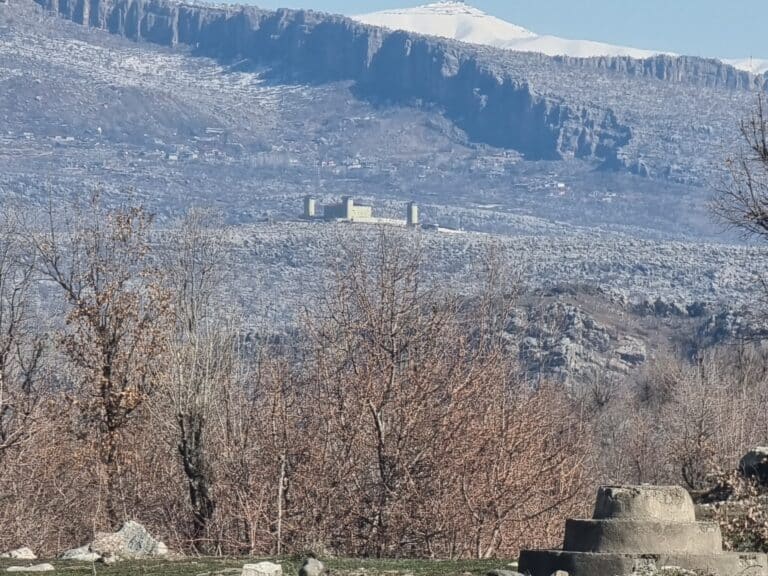In Dialogue, we highlight exchanges regarding CPT’s vision and peacemaking ministry. In this issue we glimpse a discussion among CPTers initiated by Co-Director Doug Pritchard who asked the question, “Should CPT be thinking about purchasing carbon offsets for the flying and driving that we do?”
Doug Pritchard, Co-Director, Toronto, ON: The idea is, if you cannot reduce your travel which contributes carbon dioxide (greenhouse gas) to the atmosphere, you buy an offsetting “carbon credit” from an organization that has carbon-reducing projects (i.e. building windfarms, planting forests, recovering methane from dairy farms and municipal dumps, etc.). I’ve been reducing my own carbon emissions by biking and using the bus more, but I still fly a lot.
It’s a controversial proposition because there are many outstanding questions, such as how much carbon your flight has actually contributed to the atmosphere. One organization that sets a high standard (www.myclimate.org) suggests an additional carbon cost of 4.5 tons @ $16/ton offset. That would add U.S.$70 (about 5%) to the cost of a round trip ticket from Chicago to Amman.
Maureen Jack, Reservist, Fife, Scotland: There has been some caution on carbon offsetting schemes in the UK recently. Perhaps focusing on more direct actions such as turning off computers, using low energy light bulbs, improving insulation, getting solar chargers, etc., could make a difference.
Laura Ciaghi, Reservist, Trento, Italy: It is good to think of ways we can conserve energy no matter how busy we are or how much our activity lessens the impact of others. I do not believe in “offsets” if they mean “you pay me so I emit less so you can emit more.” I do think that supporting good forestry practices and good forestation projects is a real tool to offset our carbon use.
Nicholas Klassen, Reservist, Vancouver, BC: The whole carbon offset industry is still very much in its infancy. Until we know for sure that the offsets we purchase are more than token gestures, I would commit our resources elsewhere.
Tim Nafziger, Reservist, Chicago, IL: What if we did an internal carbon offset fund? For each air mile we could set aside money for things like solar panels or other ecological improvements for places where CPTers work.
John Funk, Reservist, Armstrong, BC: It is good to examine our environmental practices in CPT. While we can individually and institutionally reduce our “carbon footprint” by cycling, shopping locally, and reducing air travel, we should not forget that any effort that reduces lethal conflict by definition helps protect the environment. Studies I have seen do not include the high environmental costs of the military industrial complex in its manufacture, delivery and application. The critical issue of saving the environment must be seen in the context of global justice and peace.
John Spragge, Reservist, Toronto, ON: Few if any forms of “carbon offsetting” have the potential to prevent carbon emissions that reducing militarism does. Just turning over the engines on an M1A1 Abrams releases 0.133 tonnes of CO2. If our work in an area prevents just one armored patrol, one gun battle, one sortie by one combat aircraft, then we have more than made up for the carbon costs of getting people there. I suggest that telling people we do not buy carbon offsets because what we do intrinsically offsets carbon emissions would have three advantages: 1) it would allow us to put more money into peacemaking; 2) It would get people thinking about the multitude of environmental costs of war and armed conflict; 3) It would demonstrate our commitment to practical success at peacemaking.
Murray Lumley, Reservist, Toronto, ON: John is correct about peacemaking having the greatest potential to reduce fossil fuel consumption, particularly oil. According to Mother Jones (6/14/07), the average U.S. soldier in Iraq and Afghanistan consumes 16 gallons of oil on a daily basis – either directly, through the use of Humvees, tanks, trucks, and helicopters, or indirectly, by calling in air strikes. That adds up to 3.5 million gallons of oil used each day by the U.S. just for direct combat operations in the Middle East war zone. The article also notes that “for every soldier stationed ‘in theater,’ there are two more in transit, in training, or otherwise in line for eventual deployment to the war zone.” Plus, in order to maintain the troops to fight a war halfway around the world, the Pentagon must “move millions of tons of arms, ammunition, food, fuel, and equipment every year by plane or ship, consuming additional tanker-loads of petroleum.”
Christina Gibb, Reservist, Dunedin, New Zealand: I’m really glad we’re having this debate, especially since coming from New Zealand I have further to travel than anyone else. I like John Spragge’s lateral thinking about the appalling environmental and global warming effects of war, which goes to the heart of what we are about. Also Maureen Jack’s on what else we can do, other than the hotly debated carbon offset schemes. Could we consider John Lynes’ idea of solar water heating in Hebron by using coils of plastic piping laid out on the roof?



